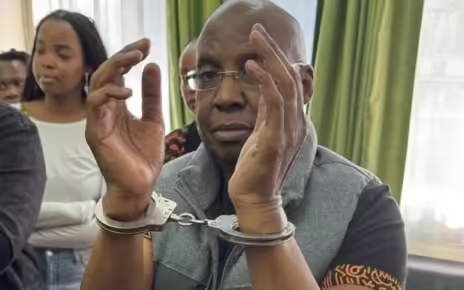This morning, another nationwide blackout hit the country except for the North Rift and Western regions. The blackout came just a week after the last major outage.
Energy and Petroleum CS, Opiyo Wandayi, has come out to explain the cause of the Friday power outage that affected several parts of the country.
Some parts affected include Nyeri, Embu, Kirinyaga, Nanyuki, Nakuru, Naivasha, Thika, Eldoret, Kericho, Kakamega, Siaya, Busia, Vihiga, Kisumu, Bungoma and Webuye.
Barely days after CS Wandayi had sternly expressed the government’s commitment to significantly reduce the frequent incidents, nothing seems to have changed. He had outlined strategies to tackle the electricity sector that’s facing challenges.
In a statement to newsrooms, the blackout was caused by a trip in the Loiyangalani transmission line and Ethiopia – Kenya interconnector. The trip affected the grid.
“Today, Friday 6th September 2024 at 8.56 am, the 220kV High Voltage Loiyangalani transmission line tripped at Suswa substation while evacuating 288MW from Lake Turkana Wind Power (LTWP) plant,” noted Wandayi.
“This was followed by a trip on the Ethiopia – Kenya 500kV DC interconnector that was then carrying 200MW, resulting to a total loss of 488MW. The total demand in the system at the time was 1790 MW. The loss of 488MW, accounting for 27.3% of the total generation, resulted in cascade failure and partial collapse of the grid.”
The newly-appointed Energy boss explained that the Western region wasn’t affected in the morning outage because its supply is through the interconnector to Tororo, Uganda.
Speedy Reconnection
He stated that his Ministry was on high alert and that power restoration efforts were almost immediate. The outage was handled within two hours, and power was restored in major towns and cities across Nairobi, Central Rift, Mt. Kenya, and North Rift regions.
“As of now about 70% of the country has been restored and we are fast-tracking the restoration process for the rest of the county we will be taking more loads as generation picks and we expect normalcy by late this afternoon,” said the CS.
“What we are witnessing today has built up over time as a result of sub-optimal investment in energy infrastructure. The sector is looking into short-term and long-term interventions to address this challenge including bringing onboard private sector capital to supplement government efforts,” he added.
Government Strategies to Curb the Menace
According to Wandayi, here are the strategies put in place for the near future:
1. Implementation of baseload (hydro & geothermal) generation projects to improve energy security and provide adequate spinning reserves.
During the last peak demand of 2239 MW recorded on 21st August 2024, 6MW was loaded from the grid while the reserve margin was only 9MW against the system requirement of 310 MW.
2. Enhancing grid flexibility and resilience by completing the following projects:
- Turkwell-Ortum-Kitale
- SonduNdhiwa
- Nanyuki-Isiolo
- Narok – Bomet
- Mariakani substation
- repair of Loiyangalani – Suswa Transmission line for double circuit operation
- migration from 220kV to 400kV operation
- Completion of ground electrode for HVDC for bipolar operation
- Lessos substation and installation of STATCOM for voltage regulation at Suswa and Rabai.
3. Construction of alternative evacuation lines namely:
- Gilgil-Thika-Malaa-Konza 400kV to complete the Nairobi Ring to decongest Suswa Complex
- Rongai Keringet-Chemosit to decongest Kisumu-Muhoroni-Chemosit, MenengaiOlkalao-Rumuruti to provide access to Mount Kenya region to geothermal power.



